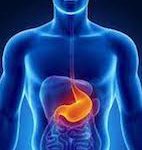 The risk of an infection with the bacterium Helicobacter Pylori is 22% lower in people who drink alcohol, compared to non-drinkers. Alcohol could be involved in elimination of the infection. That is the conclusion of a meta-analysis that is published in the scientific journal Infectious Diseases.
The risk of an infection with the bacterium Helicobacter Pylori is 22% lower in people who drink alcohol, compared to non-drinkers. Alcohol could be involved in elimination of the infection. That is the conclusion of a meta-analysis that is published in the scientific journal Infectious Diseases.
What is already known? Alcohol consumption can have both beneficial and harmful effect on health, also depending on the amount consumed. Most studies indicate that alcohol can reduce the risk of H. Pylori infection. Some studies find different results, but this could be due to strongly diverging levels of alcohol consumption within the study populations.
What this study adds? This is the first quantitative meta-analyse looking at the dose-response relationship between alcohol and H. Pylori infection.
Lower risk
People consuming up to 60 g of alcohol per day have a lower risk of H. Pylori infection. For beer drinkers the risk of an infection is 16% lower, for wine drinkers even 25%. That appears from a meta-analysis1 that combined the results of 12 observational studies. Detailed analyses find that the association between alcohol and H. Pylori is consistent, regardless of sex, age, geographic location, study population or beverage type.
Mechanism
Infections with H. Pylori mainly occur during childhood. Therefore, researchers think that the association between alcohol and H. Pylori is related to suppression or elimination of the infection rather than reducing the rates of acquisition of the infection. Also laboratory research indicated that alcohol can suppress the growth of H. Pylori. Next to that, alcohol has a possible beneficial effect on the gastric mucous, gastric acid secretion and gastric emptying, which could explain the lower risk of H. Pylori infection.
H. Pylori
H. Pylori is a bacterium that occurs naturally in many people in the stomach. About half of the world population is infected with H. Pylori, but most people do not suffer from this. In some cases, the bacterium causes gastritis, peptic ulcer disease, gastric malignancies or other gastrointestinal disorders2.
Strengths of this study
• Dose-response association investigated.
• Analyses stratified for geographic areas, detection methods of the infection and beverage types.
Weaknesses of this study
• Relative small sample size.
• Possible misclassification of alcohol exposure due to changing consumption over time and self-reporting of alcohol intake.
• No ‘golden standard’ for detection of H. Pylori infection.
• Not all included studies corrected for the same possible confounding factors.
References
1. S.-Y. Liu, Han, X.-C., Sun, J., Chen, G.-X., Zhou, X.-Y., en Zhang, G.-X., Alcohol intake and Helicobacter pylori infection: a dose-response meta-analysis of observational studies., Infectious Diseases (London), vol. 48, nr. 4, pp. 303-309, 2016.
2. https://www.darmklachten.nl/aandoeningen/helicobacter-pylori (in Dutch)
